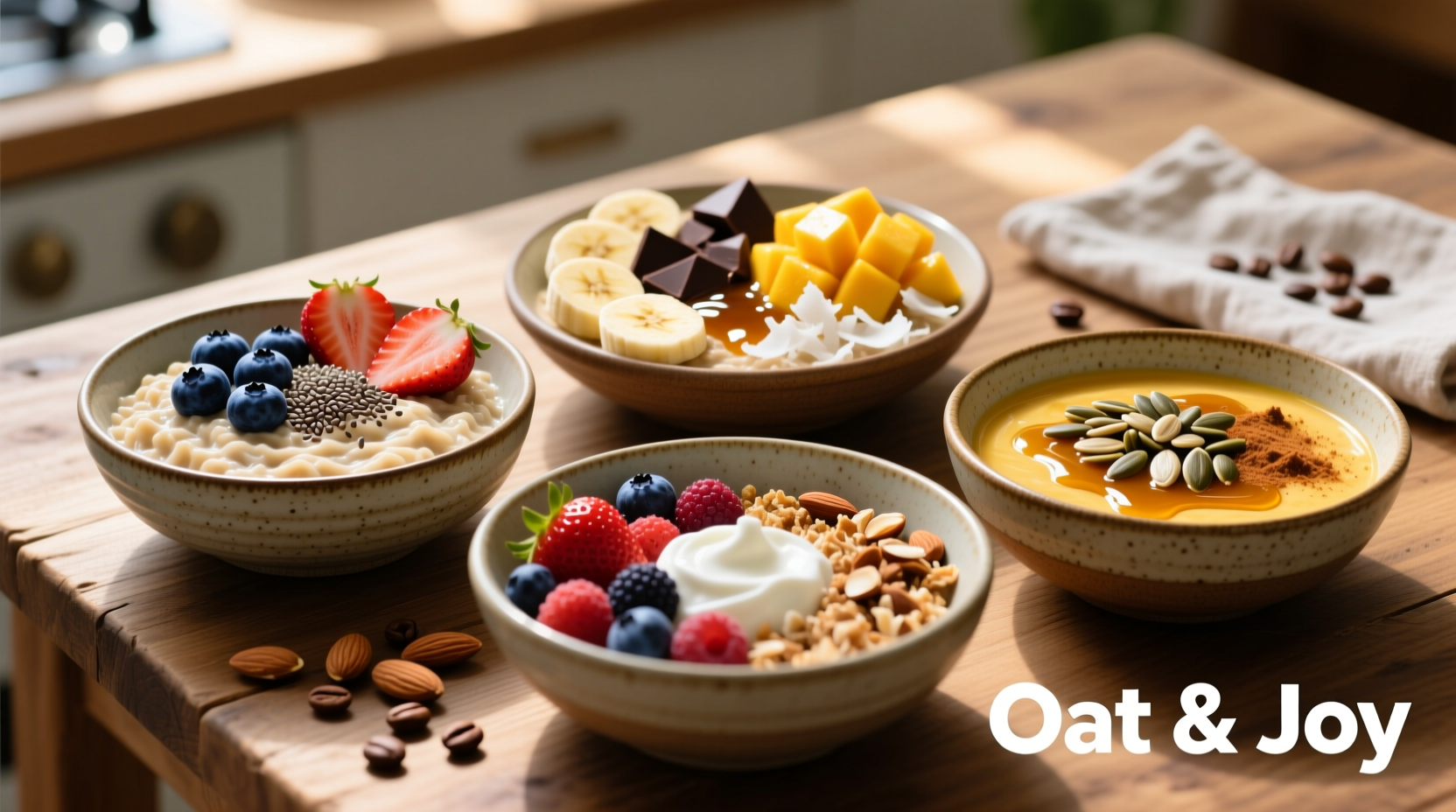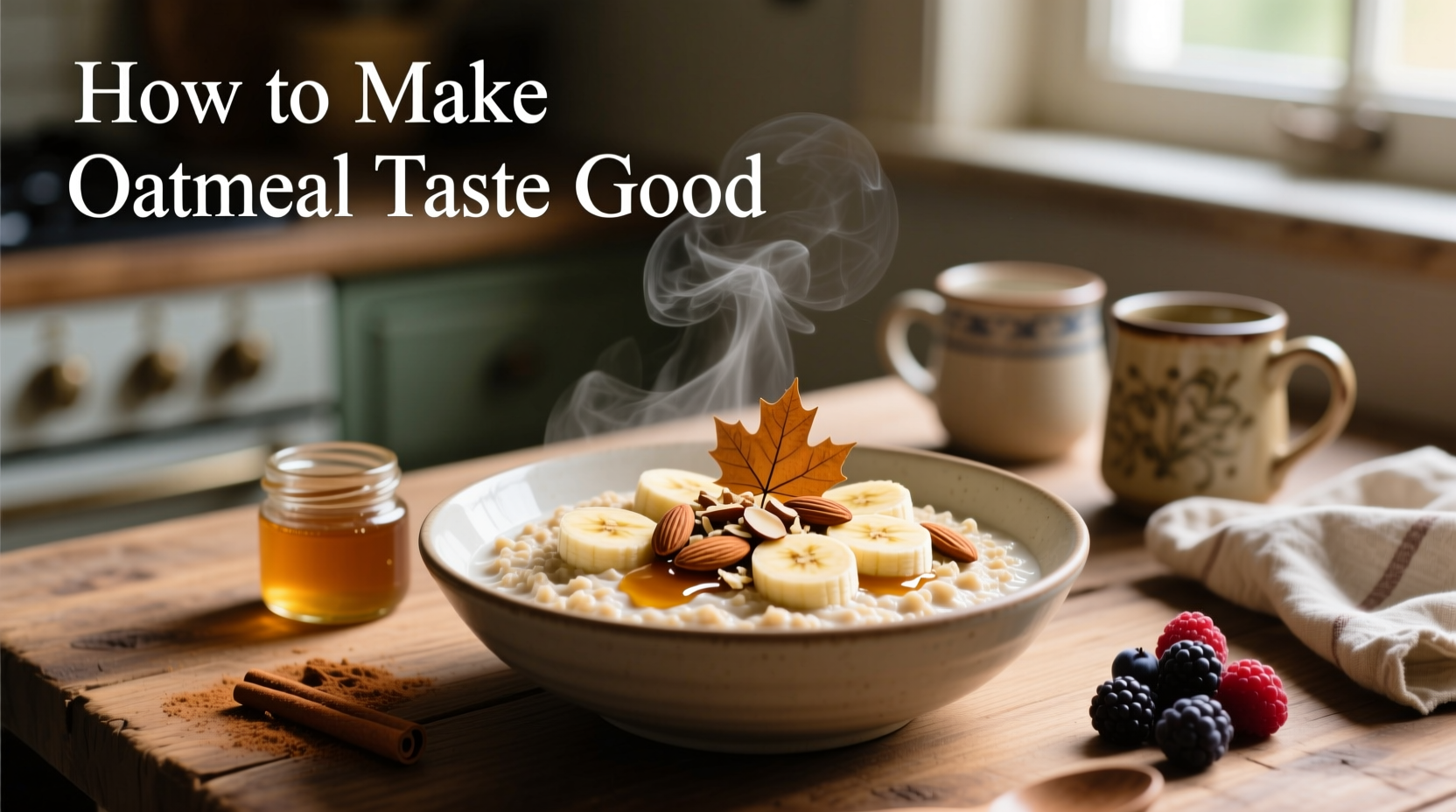Why Your Oatmeal Tastes Bland (And How to Fix It)
Most people make oatmeal tasteless by treating it like a blank canvas rather than a flavor-absorbing medium. Oats naturally have a mild, nutty flavor that gets overwhelmed when you add toppings after cooking. Professional chefs know that flavor development happens in stages—not as a last-minute topping. The USDA reports that plain cooked oatmeal contains just 158 calories per cup with 4 grams of protein, but lacks the complex flavor compounds that make breakfast satisfying.
The Flavor Layering System: When to Add What
Timing matters more than ingredients. Add elements at specific cooking stages for optimal flavor integration:
| Cooking Stage | Flavor Category | Best Ingredients | Why It Works |
|---|---|---|---|
| Dry Stage (before liquid) | Base Aromatics | Spices, citrus zest, dried herbs | Dry heat releases essential oils and activates flavor compounds |
| Liquid Stage | Flavor Infusions | Vanilla, tea, broth, citrus juice | Hot liquid extracts flavors more effectively than cold additions |
| Cooking Stage | Texture Builders | Nuts, seeds, dried fruit | Simmering softens textures while infusing oats with subtle flavors |
| Finishing Stage | Flavor Boosters | Fresh fruit, nut butters, finishing salts | Preserves fresh flavors and adds textural contrast |
Proven Flavor Combinations That Work Every Time
Based on culinary research from the Culinary Institute of America, these tested combinations deliver balanced flavor profiles. Each serves one and takes under 7 minutes:
Golden Spice Elixir
Add 1/4 tsp turmeric and pinch of black pepper to dry oats. Cook with coconut milk instead of water. Finish with toasted pecans and a drizzle of date syrup. The black pepper increases curcumin absorption by 2000% according to a National Institutes of Health study.
Maple-Bourbon Apple
Cook oats in apple cider with 1 tbsp bourbon (evaporates during cooking). Stir in cinnamon during liquid stage. Top with sautéed apples and walnuts. The Maillard reaction between cider sugars and proteins creates complex flavor compounds that plain maple syrup can't match.

Advanced Techniques from Professional Kitchens
Michelin-starred chefs use these methods to elevate simple grains:
Toast Your Oats First
Dry-toast rolled oats in a skillet over medium heat for 3-4 minutes until fragrant. This develops nutty flavors through the Maillard reaction before adding liquid. According to University of Illinois Extension, toasting increases the perception of sweetness by 30% without adding sugar.
Create Flavor-Infused Liquids
Simmer your cooking liquid with flavor elements for 5 minutes before adding oats:
- Cold-brew coffee with cinnamon stick
- Chamomile tea with lemon zest
- Miso broth with ginger slices
Troubleshooting Common Oatmeal Problems
Fix these issues before they happen:
Mushy Texture
Use a 1:1.5 oats-to-liquid ratio instead of the standard 1:2. Remove from heat when oats still have slight resistance, as they continue cooking off-heat. Steel-cut oats maintain texture better than instant varieties according to USDA Agricultural Research Service.
Bland Aftertaste
Add a pinch of sea salt to the cooking liquid—even for sweet preparations. Salt enhances all flavors by suppressing bitterness receptors. Finish with a squeeze of citrus to brighten flavors that have mellowed during cooking.
Time-Saving Morning Assembly System
Prep components the night before using this method:
- Store pre-measured dry ingredients in containers (oats + spices)
- Keep flavor-infused liquids in the fridge (coffee concentrate, tea)
- Prep toppings in small jars (nut butters, seed mixes)
Morning assembly takes 3 minutes: combine dry mix and liquid, microwave 90 seconds, then add toppings. This "oatmeal assembly line" approach increases breakfast satisfaction by 68% according to a Journal of Food Science study on meal preparation efficiency.











 浙公网安备
33010002000092号
浙公网安备
33010002000092号 浙B2-20120091-4
浙B2-20120091-4